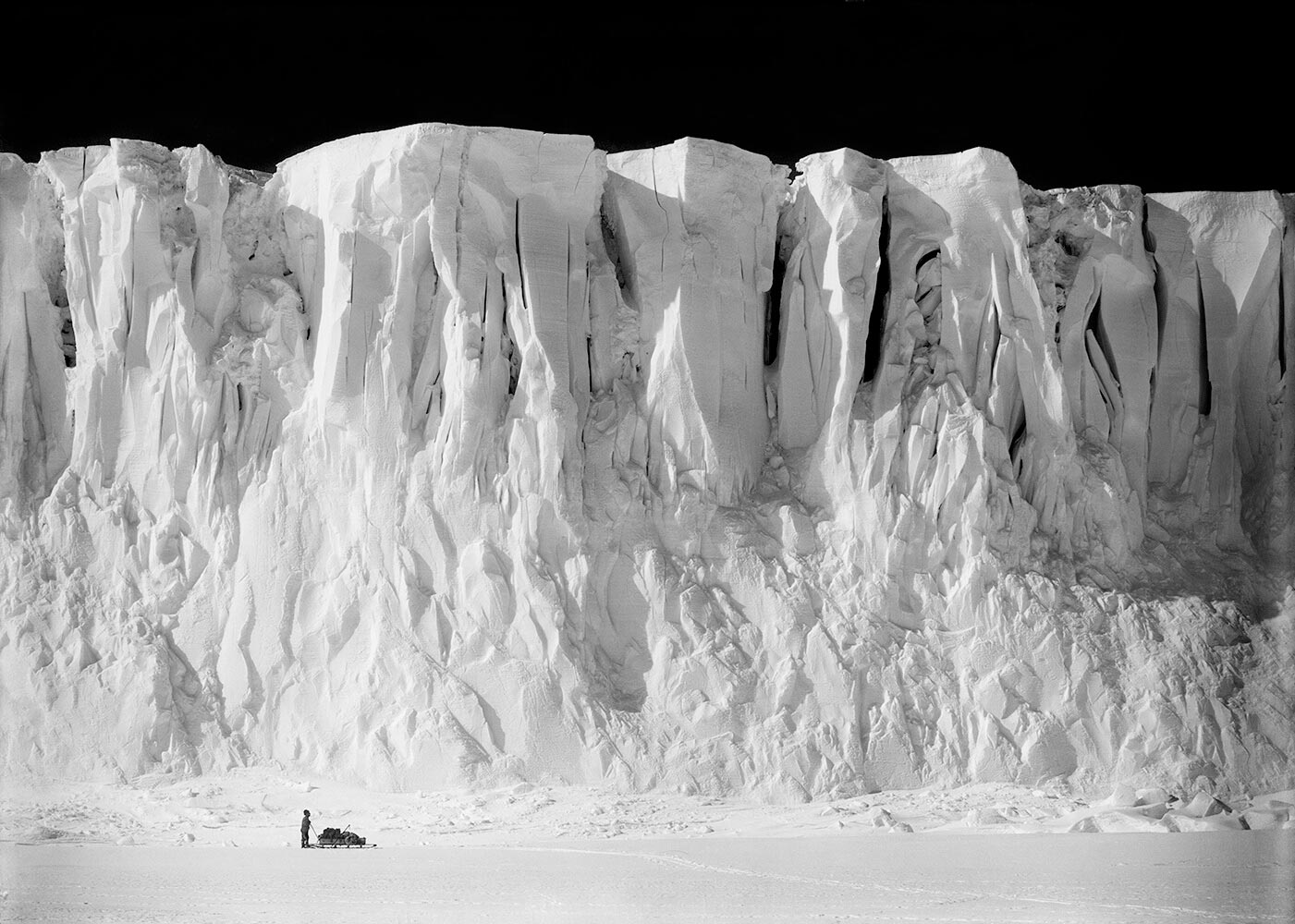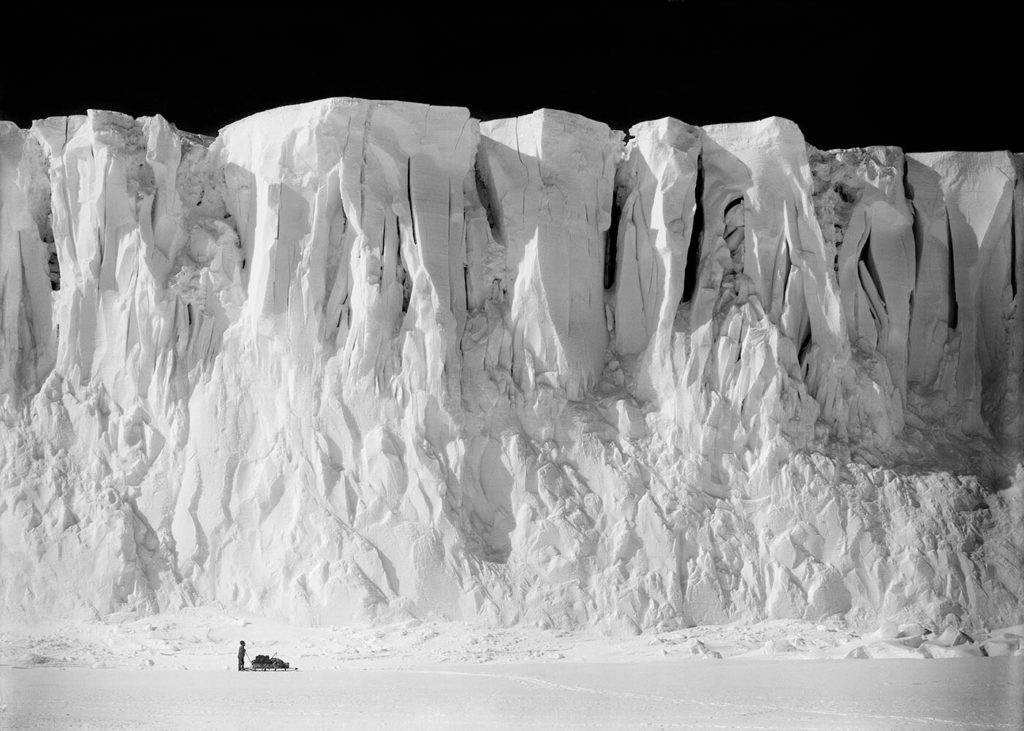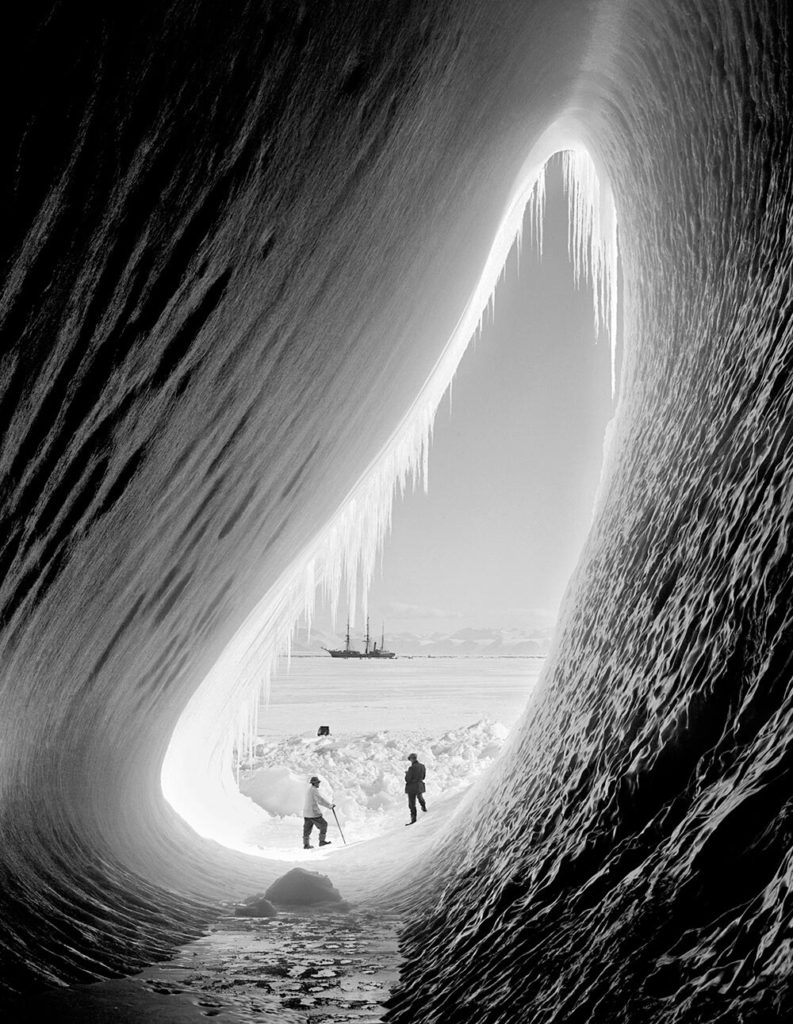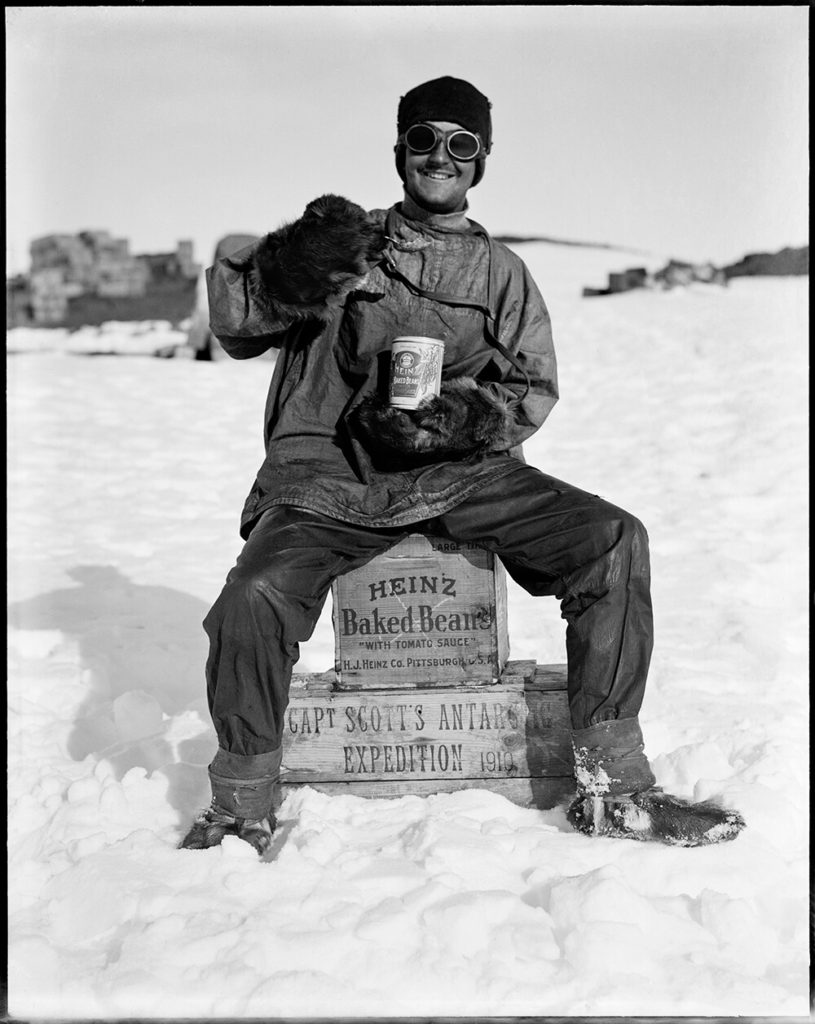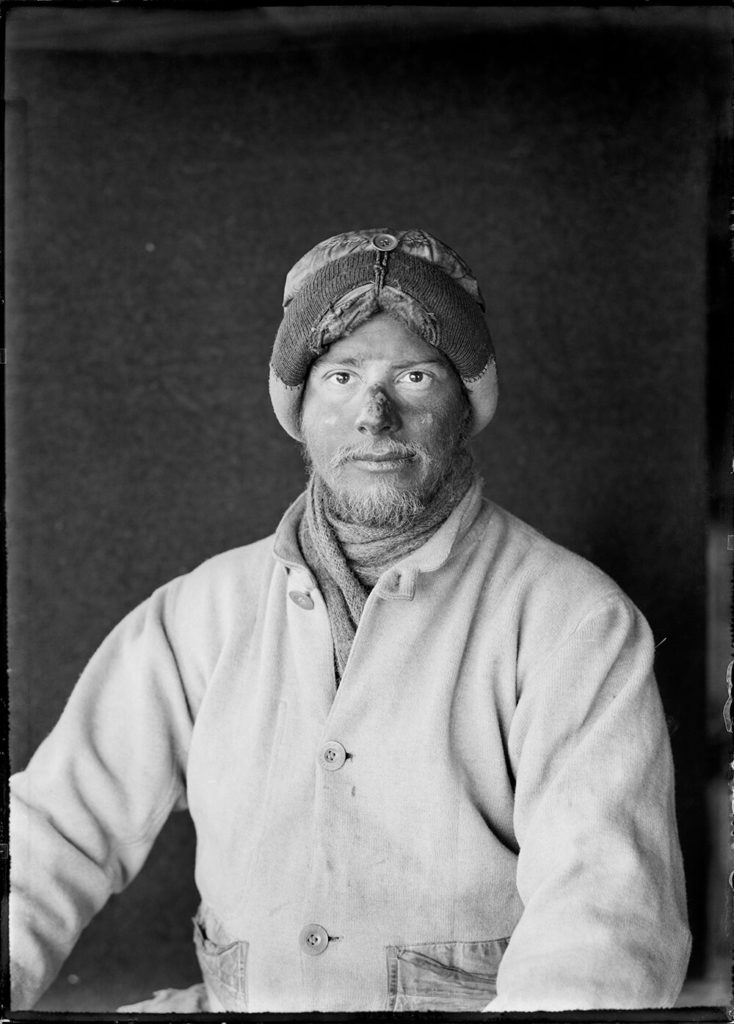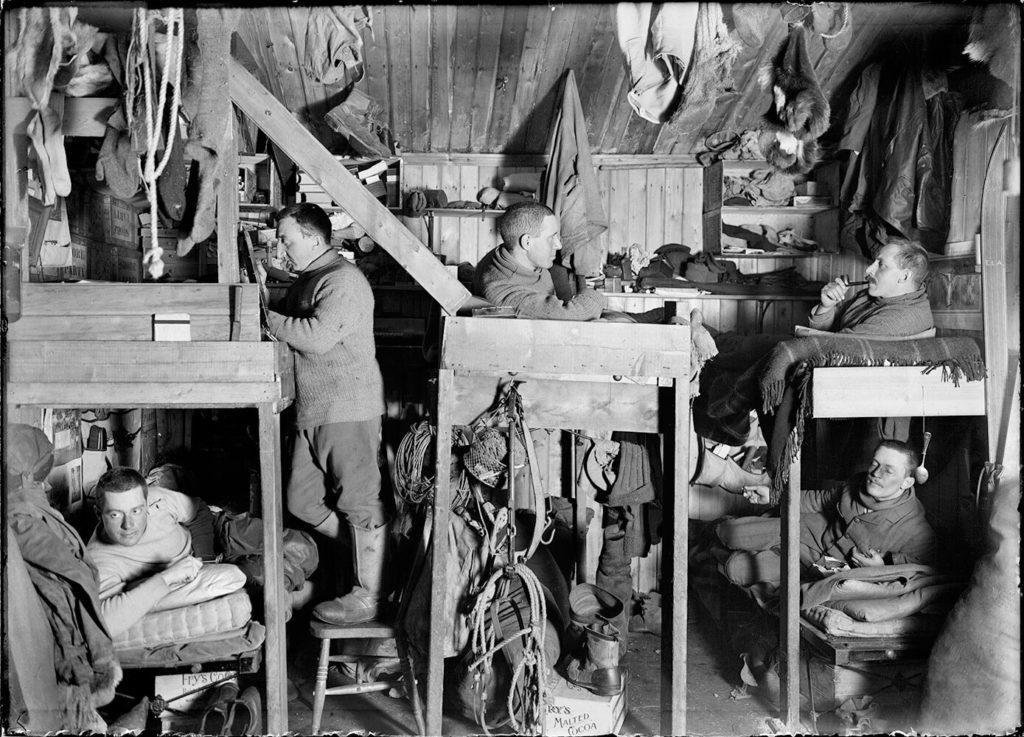Herbert Ponting
Englishman Herbert Ponting (1870-1935) was an adventurer first and photographer second. As a young man, he rejected the idea of following his father into banking and instead set off for the American West and wilds of California. Finding work first as a miner, Ponting eventually bought a fruit ranch and married an American woman. Photography had always been a hobby and encouraged after a chance meeting with a photographer near San Francisco, Ponting began showing his work publicly and offering stereoscopic prints to publishing companies. After the turn of the century, Ponting gathered his equipment and traveled to Asia as a freelancer. He first photographed the Russo-Japanese War then continued on to Burma, Korea, Japan, China, and India providing travel stereoscopes to the burgeoning magazine market.
Ponting returned to Europe an experienced professional and traveled the continent photographing and writing extensively for many contemporary periodicals. In 1910, he published a book of Japanese scenes, In Lotus-land Japan, and was elected a Fellow of the Royal Photographic Society. Given Ponting’s extensive accomplishments and reputation as a raconteur, it was not a surprise when he was chosen as a member of Robert Falcon Scott’s Terra Nova Expedition to the South Pole, the first ever photographer invited on an Antarctic expedition.
Ponting worked from a small darkroom set up on the mainland winter camp shooting images on glass plate negatives—1,700 in all. His work captured the stark beauty and timeless quality of Antarctica as well as the extreme conditions under which the crew and their animals lived and worked. Tragically, in 1912 Scott and members of his crew did not survive their inland travels towards the South Pole. Ponting’s photographs, intended to be a celebration of man’s triumph over nature, became a stark memorial to the expedition’s leader. The public, moved by Scott’s final words and Ponting’s images, donated massive sums to the expedition’s widows and survivors. Ponting spent his remaining years promoting the works.
Today, this collection provides a stirring testament to the heroism and bravery of all involved and perfectly encapsulates the spirit of adventure and discovery that epitomised the historic journey.
